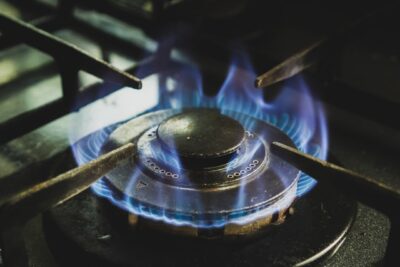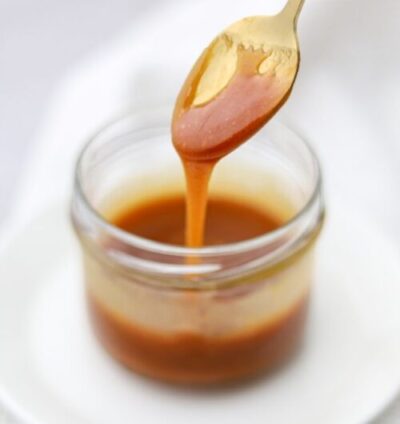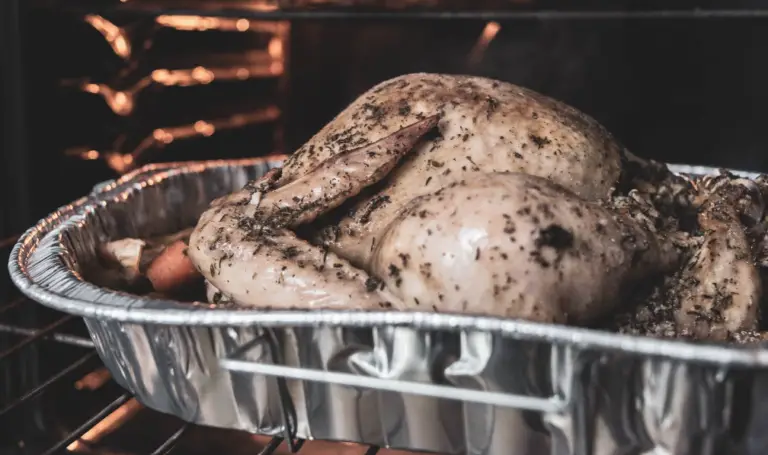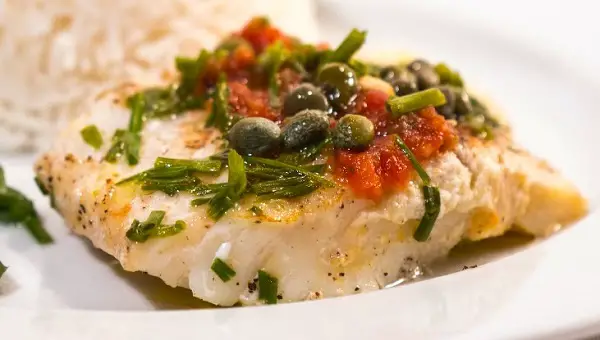I remember the first time I tried making caramel sauce. I was all excited, because I have seen the video for the umpteen time, and it looks really simple. Sugar, heavy cream and butter. What could go wrong?
I was heating up my sugar and 10 mins later, all I got was a white sugar syrup. No browning at all. I thought that was normal, and went ahead to add my heavy cream, it got all hot and bubbly, and I thought that’s when it’s going to brown. But no, it just turned white, white as a ghost.
So why did my caramel not turn brown? The main reason was not enough heat when melting the sugar. You want to heat up until you see big bubbles and at this point, your sugar will start turning brown.
Heat is one of the reason, but there could be other factors too.
Why did my caramel not turn brown?

Low heat is the main reason. When melting your sugar, you want to use a medium low heat. Your sugar will start to boil, wait until you see the sugar start turning brown. Once it reaches your desired browning, then take it off heat and add your cream.
Adding too much water to your sugar could also be another reason. If have added too much water, you will need to boil it much longer until all the water is evaporated, before you start seeing your sugar turn brown.
One thing to note is that you should only add your cream when the sugar turns brown. If you add your cream before the sugar browns, then your caramel will not brown no matter how long you cook.
How long does it take for caramel to turn brown
Generally, it should take between 8-10 mins. Of course if you have added more water, then it will take more time to cook out the water.
Instead of looking at a timer, it is best to look at the sugar that you are heating. It will turn brown eventually, if you are heating in the correct temperature.
How do you make caramel sauce darker?
If you have made a batch of caramel sauce that is too light in color, and you want to darken the caramel sauce, you will need to start with boiling sugar. This time, make sure that the sugar turns to your desired browning. At this point, you can add your existing caramel to the mix. This should help darken it.
What can I do with a failed caramel sauce?
So you have made a pale colored looking caramel sauce. If you taste it, it would be just as delicious. Here are some great ways to use them.
- Drizzle them on your ice cream, cake
- Add them to your coffee
- Use as a dipping sauce for your apple
- If you can making a cake, you can swirl them in to be baked
Additional Tips on making caramel
Understanding Dry and Wet Caramelization
There are two main caramelization techniques: dry and wet.
Dry Technique: This method uses only sugar. To master this, lay a sparse layer of sugar in a pan and heat it at a low setting. As the first layer liquefies, slowly introduce more sugar. Instead of stirring, gently move the pot across the burner to ensure even melting.
Wet Technique: This method blends sugar with water, creating a texture akin to ‘wet sand’. Start on a medium setting, amalgamating the sugar and water. Once combined, let it simmer without stirring. Should crystallization occur, a few lemon juice drops, when diluted, can help rectify it.
Addressing Crystallization
Stirring: In the early phases, particularly while the sugar is integrating, minimal stirring is acceptable. Yet, when the concoction becomes liquid, steer clear of stirring. If you notice inconsistent coloring, give the pan a gentle tilt and swirl. However, be cautious of stirring too much, which could trigger crystallization.
Pot Cleanliness: Maintaining an immaculate pot is pivotal for caramel perfection. Any contaminants within can spark crystallization, hindering the desired outcome.




